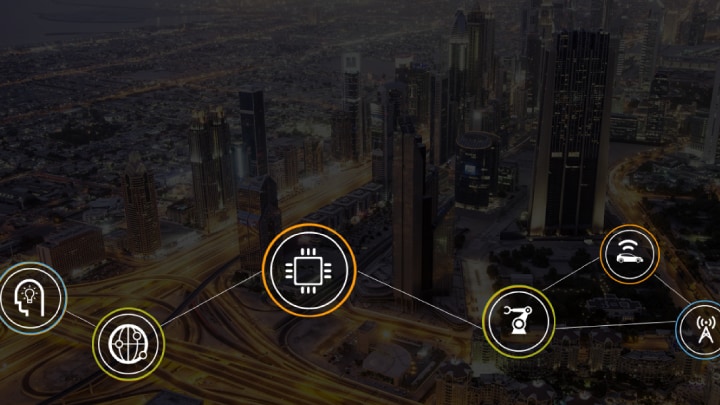Qi wireless charging, which lets you top up your mobile device’s battery by simply setting it on a
charging pad, has moved from novelty status to mainstream tech. Qi charging is now supported by
most new smartphone models and the Qi standard, defined by the
Wireless Power Consortium
(WPC), has emerged as the global standard for wireless charging, bringing safety and
interoperability to billions of devices.
Universally compatible, Qi-certified charging pads are easily integrated into just about any
surface, which means Qi charging is becoming part of everyday life. Big-name furniture makers,
including Ikea, now offer wireless charging collections that include items like bedside tables and
desks equipped with Qi chargers, and more than 100 car models now come with built-in Qi chargers
as either standard equipment or a factory option.
Qi charging has also become a part of public venues, including coffee houses, restaurants, gyms,
hotels, train stations and airport lounges. There are even mobile apps for finding the nearest
charging venues, boasting access to a rapidly growing list that already includes more than 5,000
locations worldwide.
Can You Really Set It and Forget It?
The allure of Qi charging is easy to see—after all, who wants to deal with plugs and cords if they
don’t have to? The reality, though, is that today’s Qi charging experience isn’t always as
carefree as one might like. That’s because early versions of the Qi standard require very precise
alignment and minimal separation (3 to 5 mm) between the transmitting coil of the charger and the
smartphone’s receiving coil.
The placement and distance limitations mean you have to set your phone just so and you need to be
sure the charging coil has as little as possible between it and your phone. If your phone is in a
case or has some other type of on-phone accessory, such as a knob that makes it easier to hold,
then you may have trouble getting and maintaining a strong charging connection.
These same limitations have also made it harder to integrate Qi charging into tables, dashboards
and other places where people are likely to set their phones. With furniture, for example, instead
of being able to offer a more streamlined design, with the charger either hidden from sight or
protected by a smooth see-through surface, furniture makers have had to cut into the tabletop,
creating an uneven surface that’s both harder to keep clean and less attractive.
NuCurrent and NXP to the Rescue
The wireless power experts at
NuCurrent, a long-time WPC member and NXP Gold Partner, have addressed the spatial freedom problem,
extending the range of Qi so that it’s easier for OEMs to integrate and more reliable for
consumers to use. NuCurrent’s Qi-certified design specification, identified as MP-A17, is based on
NXP’s, high-performance chipsets for
Qi chargers. It extends the charging distance to 12 mm, which is over three times the distance of the
initial standard.
It’s a Game-Changer for Qi
The ability to charge over extended ranges, with a larger margin for misalignment, means that
NuCurrent’s innovative MP-A17 transmitter design brings new, category-defining functionality to
the industry. Being able to charge a phone, even if it’s misaligned or in a thick case, will
greatly enhance the end-user experience. Extended range even helps boost performance and charging
times, since improved air flow can prevent devices from heating up and shifting to lower power
levels, ultimately allowing a continuous 15W charge.
At the same time, extended range offers greater design flexibility, too. The MP-A17 design can
charge through non-metallic table surfaces, including marble, wood and granite. That means
manufacturers can integrate Qi chargers in new, sleeker ways and can expand Qi charging into new
areas, such as recreational vehicles (RVs) and boats. Chargers can be hidden under fiberglass and
interior table surfaces, for more unique, creative and functional materials and designs. Cockpit
surfaces, especially those exposed to water, now have a charging option, as MP-A17 offers marine
voltage regulation and offers enough separation for sealed surfaces and effective thermal
management.
Optimized for Flexible Integration
NuCurrent offers two versions of the MP-A17 solution. The first version, designed for general
charging applications, such as hospitality, office and furniture use cases, is equipped with a USB
power delivery (PD) front-end. The second version, for automotive-grade applications, such as
vehicles, boats and RVs, has a 12-24V automotive front-end that’s designed for ISO 7637-2 and ISO
16750-2. NuCurrent can customize either solution for specific use cases. Ratified by the WPC as a
global specification in August 2019, the MP-A17 design specification is more than a one-off
solution. NuCurrent worked closely with NXP (a member of the WPC Board of Directors) and the WPC
itself to help ensure interoperability and safety.
View the Webinar
To learn more about MP-A17 and NuCurrent’s 15W Qi wireless charging solution, watch
“Extended Range Qi Charging: New Advances in Wireless Power”. The webinar program describes the MP-A17 solution in detail, including a discussion of the
techniques used to ensure interoperability, improve thermal efficiency and safely detect foreign
objects.
Also be sure to visit
NuCurrent
for more information.




